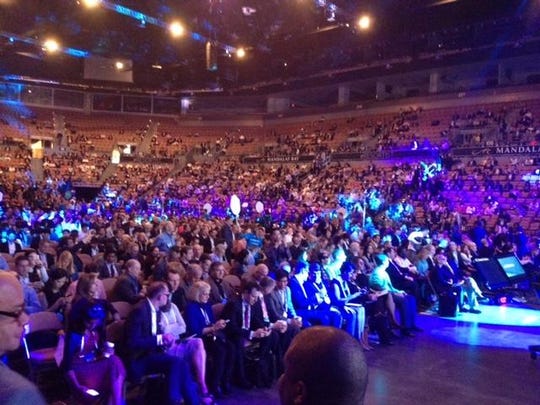Filling stadiums with serverless computing

Suppose someone told you that you were in charge of setting up technology to sell online tickets to the next World Cup event, or Ed Sheeran, or Taylor Swift concert. What kind of technology would you use to accomplish that?

For Ticketek, the major event ticketing provider in the Australia-New Zealand region, the answer was obvious: the cloud, and more specifically, serverless computing. The company runs its operations on Amazon Web Services' Lamda architecture, supported by MongoDB databases, to manage workloads that can suddenly have 300,000 users at the moment when tickets go on sale.
I had the opportunity to sit down with Tane Oakes. enterprise architect at Ticketek, at the recent MongoDB conference in New York. "Our objective is always look at serverless first," says Oakes. "It doesn't really matter whether it's AWS or Google Cloud or any of that type of functionality, we always look at it as a serverless approach."
Oakes explains why Ticketek adopted a serverless approach. "From an operations and management standpoint, we don't need to be the experts at running a MongoDB database. And we don't need to be experts in running some kind of streaming platform. We've got to be experts in being able to use it as a ticketing platform. But we don't need to be the experts running it."
In addition, Ticketek's serverless architecture provides the on-demand scale and flexibility to respond in real-time to huge spikes in demand. "We do massive volumes of sales. But at 8:59am we may have no one on the site, but at 9am, when Ed Sheeran tickets go on sale, we have 300,000 users. With a serverless approach, we can allow the likes of AWS and MongoDB manage and ensure that capacity can be met, based on the requests going through."
"Ticketek needs the architecture to support 300,000 simultaneous users, but on an infrequent basis. When we run what we call 'hot shows' with a major artist like Eminem coming through to tour Australia, he's putting on five different events across five different cities. So there will be five different hot shows potentially on the day [of tickets being available] for each city he's going through. We sell these tickets so fast and go from zero to 300,000 [users] and sell out maybe in half an hour.
SEE: Prepare for serverless computing (ZDNet special report) | Download the report as a PDF (TechRepublic)
"We don't want to run an environment to handle that load for 24 hours a day, seven days of the week, going through. Because that's a lot more costly affair."
A serverless-first approach enables enterprises such as Ticketek to "actually just run it the volumes we need to run at," says Oakes. "So later in the day, where you may be only have 3,000-4,000 people on the site, you don't need to be running in the volume to handle 300,000-400,000 people,"
This made the use of cloud and serverless computing an easy sell to management, Oakes adds. "From Ticketek's perspective, our goal is to be able to sell as many tickets as possible as fast as possible without any issues. We can do all these wonderful things and it won't cost millions of dollars."
(Disclosure: I was a guest of MongoDB at their user conference.)